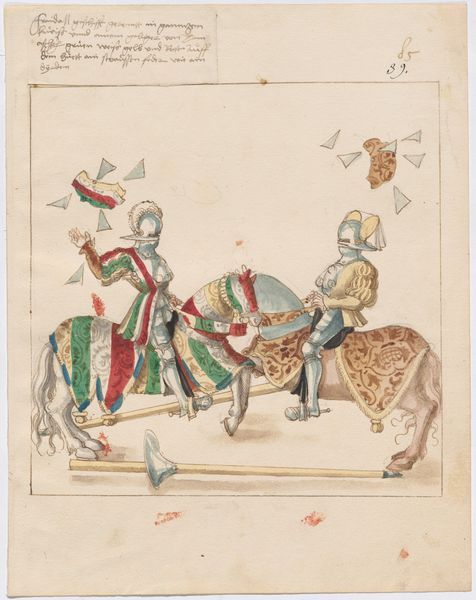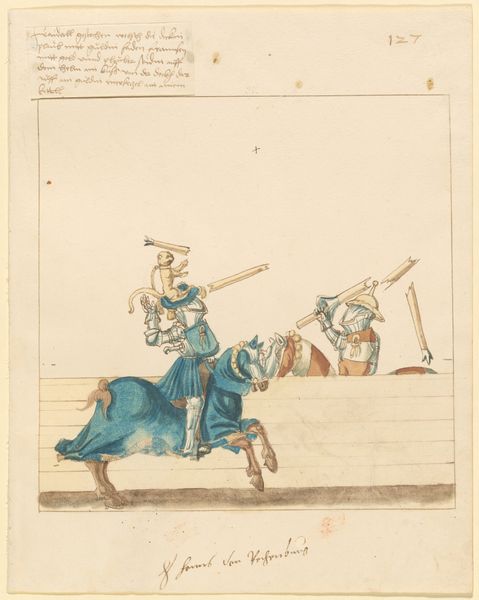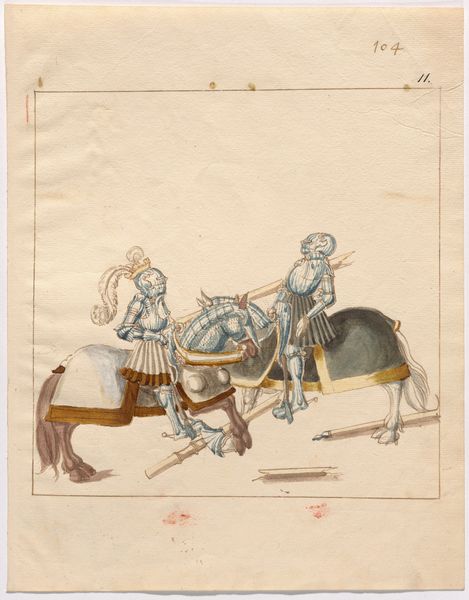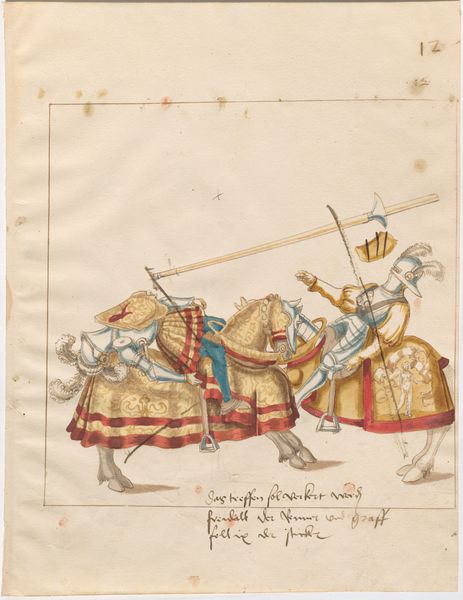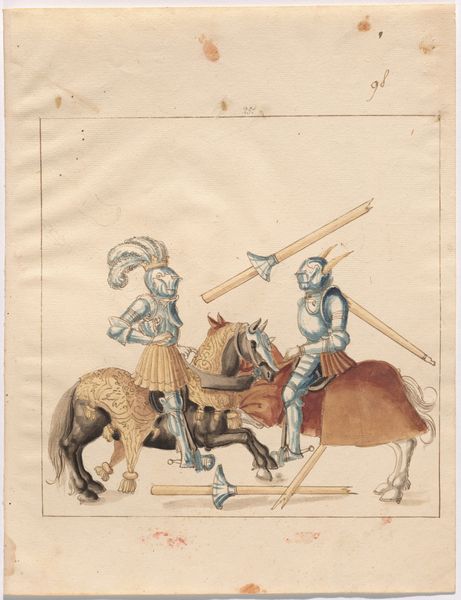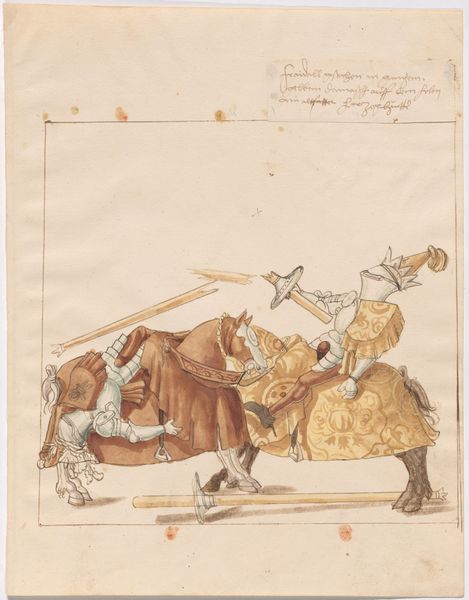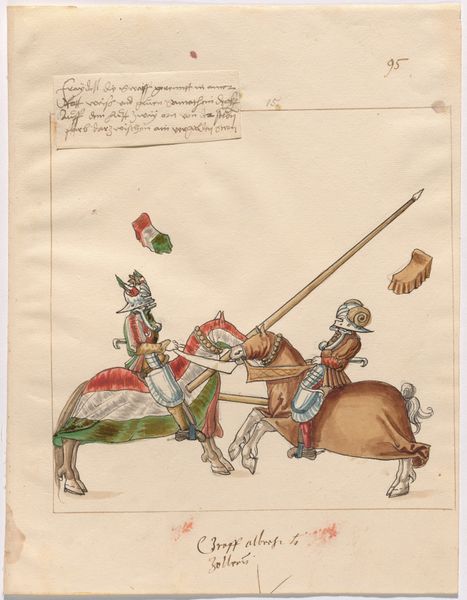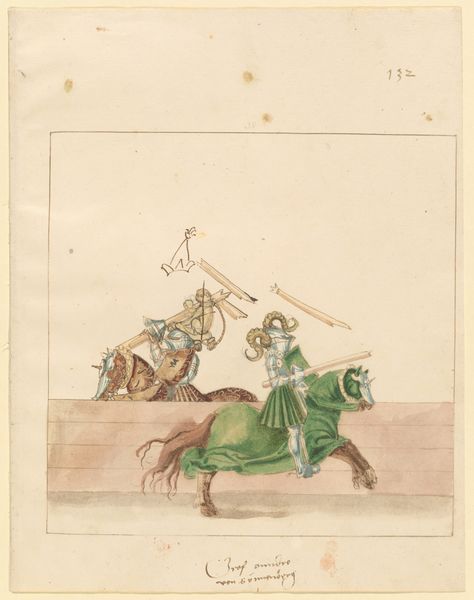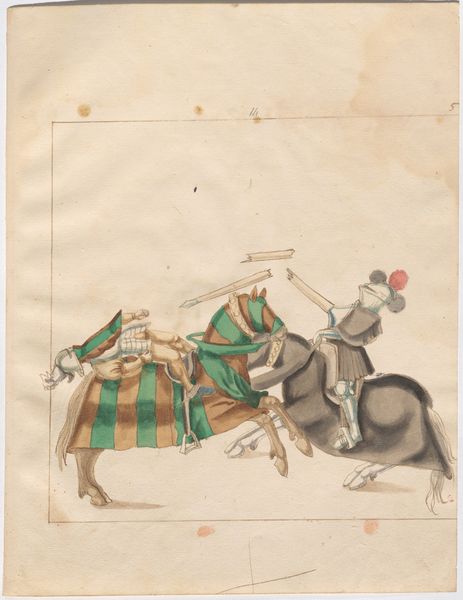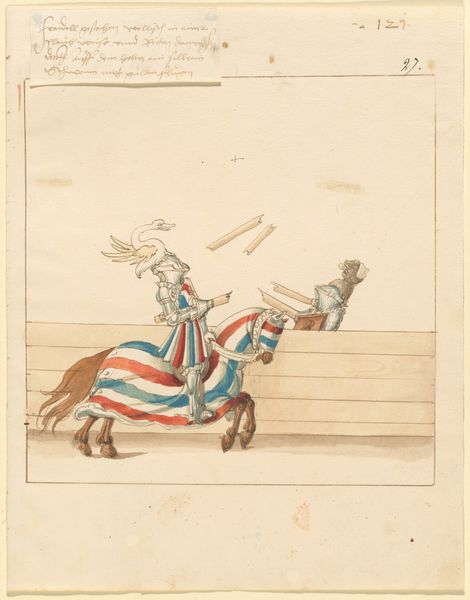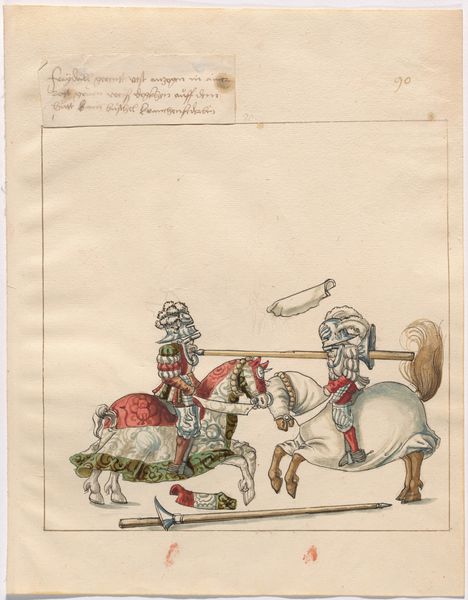
drawing, coloured-pencil, watercolor
#
drawing
#
coloured-pencil
#
water colours
#
figuration
#
watercolor
#
coloured pencil
#
genre-painting
#
history-painting
#
italian-renaissance
Dimensions: sheet: 34 × 26.3 cm (13 3/8 × 10 3/8 in.)
Copyright: National Gallery of Art: CC0 1.0
Curator: This delightful drawing, titled "Italian Joust of Peace," dates from about 1512 to 1515 and is rendered in watercolor and coloured pencil. It presents a vibrant scene, but something about it feels…almost naive? Editor: I agree. The scene is strangely calm, almost like a staged performance. Look how neatly the broken lances are arranged, and how poised the knights remain even after impact. It almost softens the potential violence, wouldn’t you agree? Curator: Precisely. These jousts, especially in Renaissance Italy, weren’t just spectacle; they were highly performative political statements. The aristocracy used them to project power, wealth, and chivalric ideals. Each element from the decorative horse cloths to the flamboyant helmets are all constructed for ideal impact, politically speaking. Editor: And think of the socio-political dynamics. These jousts functioned to solidify class divisions, with commoners relegated to the role of spectator, reinforcing existing hierarchies. In contrast to battle, women play a very large role within these spectacles: noble women were very active participants and key spectators of the Joust of Peace. It’s as though they softened warfare, and brought women to be part of a power play that was typically exclusively male. Curator: Absolutely. The inclusion of women highlights the ritualized, almost courtly, nature of the event. Their presence isn’t just decorative, but acts as silent support and a projection of power that their families could command through society and the battlefield. And if you observe closely, one knight appears to have already taken a hit and is now stepping away with what seems to be a sword or mallet? That may be some evidence of real play for blood, perhaps less sanitised and "feminised" than we think. Editor: You're right, there’s more tension than I initially perceived. What looked staged could actually reflect a complex game of strategy. However, I can’t ignore how these displays often reinforced the very structures of inequality, where honor and spectacle served to normalize unequal distribution of power. It would have been so much easier to see, with 21st century eyes, that class division was never to be the norm. Curator: True, our critical perspective informs how we see these displays today. The Italian Renaissance sought a means of legitimising their governance using these and other such imagery of "chivalric" prowess and ability, where noble men play and die with honor. Today, these works still challenge us to negotiate its historical role while engaging its contemporary reverberations. Editor: Indeed. Understanding the nuances helps us dissect the past and engage critically with present day displays of power and privilege.
Comments
No comments
Be the first to comment and join the conversation on the ultimate creative platform.
